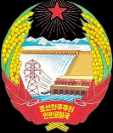I sort of missed it as it went by, but July 27 marked two years for me at the Permanent Mission of the Republic of Korea to the United Nations. This is the longest I’ve stayed at any job except for DoubleClick, which lasted three long years.
But it hasn’t seemed that long, presumably because I really enjoy being here. By two years in at DoubleClick, I’d gone through a fairly disastrous opening period and suffered through my boss Karen’s pregnancy leave, during which her second-in-command hewed strictly to her orders that I do no work except editing — which was a problem because there was, during that period, no editing to be done — and then, upon her return, confronted me with threats of imminent dismissal because I hadn’t been doing any work. Things turned around in my last year, when I finally got my own ego in check and learned how to behave decently in an office, while my boss finally worked out how to run a writing department (useful tip: request writing samples from job candidates). I suppose the whole transformative experience of DoubleClick, which was my first serious job out of school, made it seem longer than it was.
In any case, that’s now far in the past. Apparently speechwriters don’t usually last long here at the Mission, so I may be headed for veteran status fairly soon.


 When you start to learn a language with the intention of really understanding it deeply, you quickly discover that there are many more aspects than the few taught by formal pedagogy. Most teaching systems will give you the writing system, grammar, standard vocabulary and a certain amount of listening comprehension. Beyond that, everyone wants to learn the slang and dirty words, which are rarely included in Beginning I textbooks.
When you start to learn a language with the intention of really understanding it deeply, you quickly discover that there are many more aspects than the few taught by formal pedagogy. Most teaching systems will give you the writing system, grammar, standard vocabulary and a certain amount of listening comprehension. Beyond that, everyone wants to learn the slang and dirty words, which are rarely included in Beginning I textbooks. On Tuesday, August 8, at 7:30 p.m., the 82-year-old Korean Living National Treasure dancer
On Tuesday, August 8, at 7:30 p.m., the 82-year-old Korean Living National Treasure dancer  There are certain flavors that I will always associate with summer: fresh blackberries hot from the sun and picked straight from the vine, chocolate milkshakes like my grandmother used to make when my best friend and I would watch Scooby Doo, ice-cold lemonade.
There are certain flavors that I will always associate with summer: fresh blackberries hot from the sun and picked straight from the vine, chocolate milkshakes like my grandmother used to make when my best friend and I would watch Scooby Doo, ice-cold lemonade.
